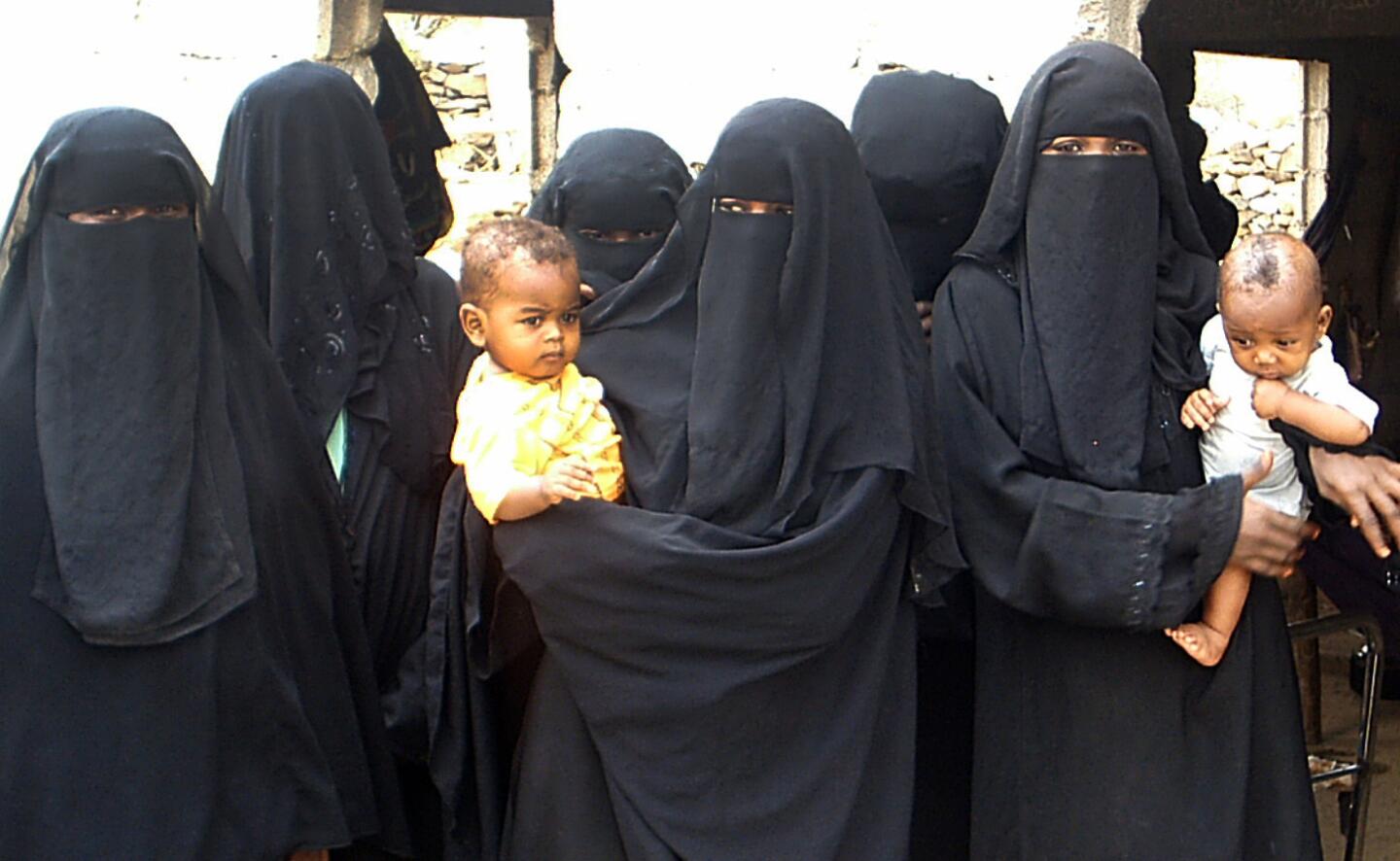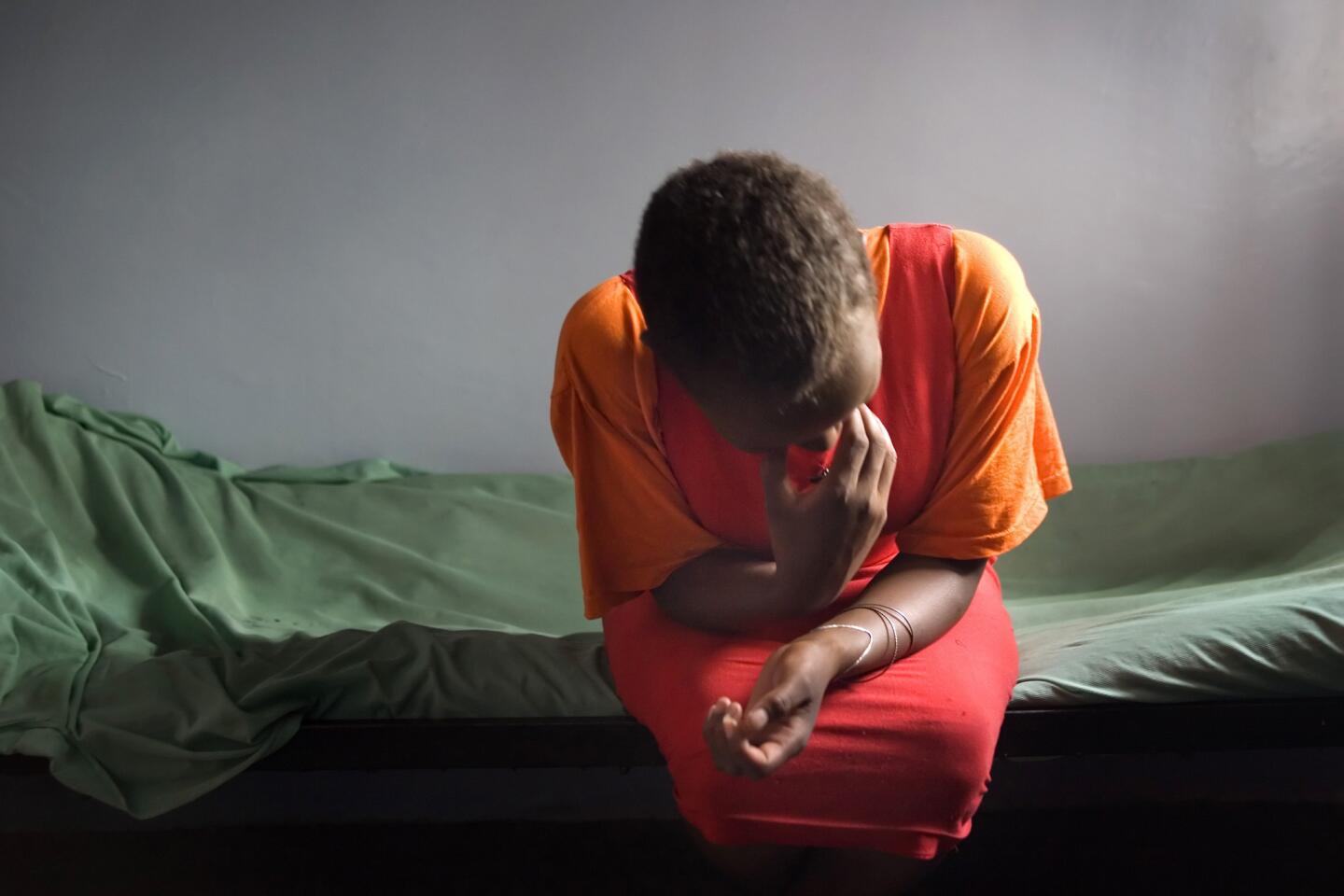
Teenager Renu Regina Masiaine tearfully explains her reason for going to a safehouse in Narok, Kenya on Dec. 20, 2006. The safehouse receives Maasai girls who seek refuge from female circumcision and early marriage.
(Marvi Lacar / Getty Images)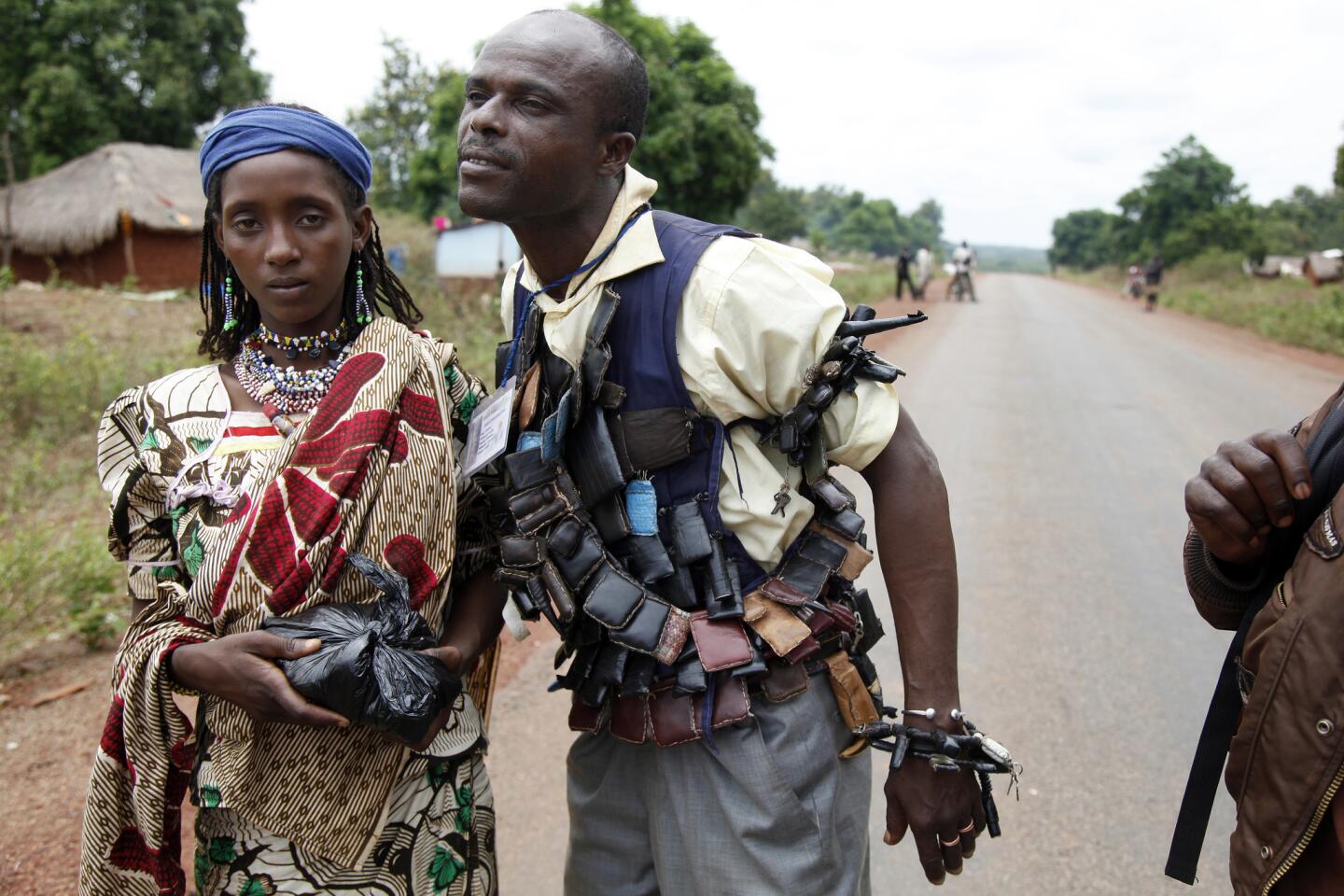
A Muslim woman, Alima Ambayakwe, brushes off a self-styled Christian militia general, Maurice Konomo, in the city of Yaloke, Central African Republic, on March 20, 2014. Most of the city’s Muslims have been driven away by the militias, and many women have been held as sex slaves by all sides in the conflict.
(Rick Loomis / Los Angeles Times)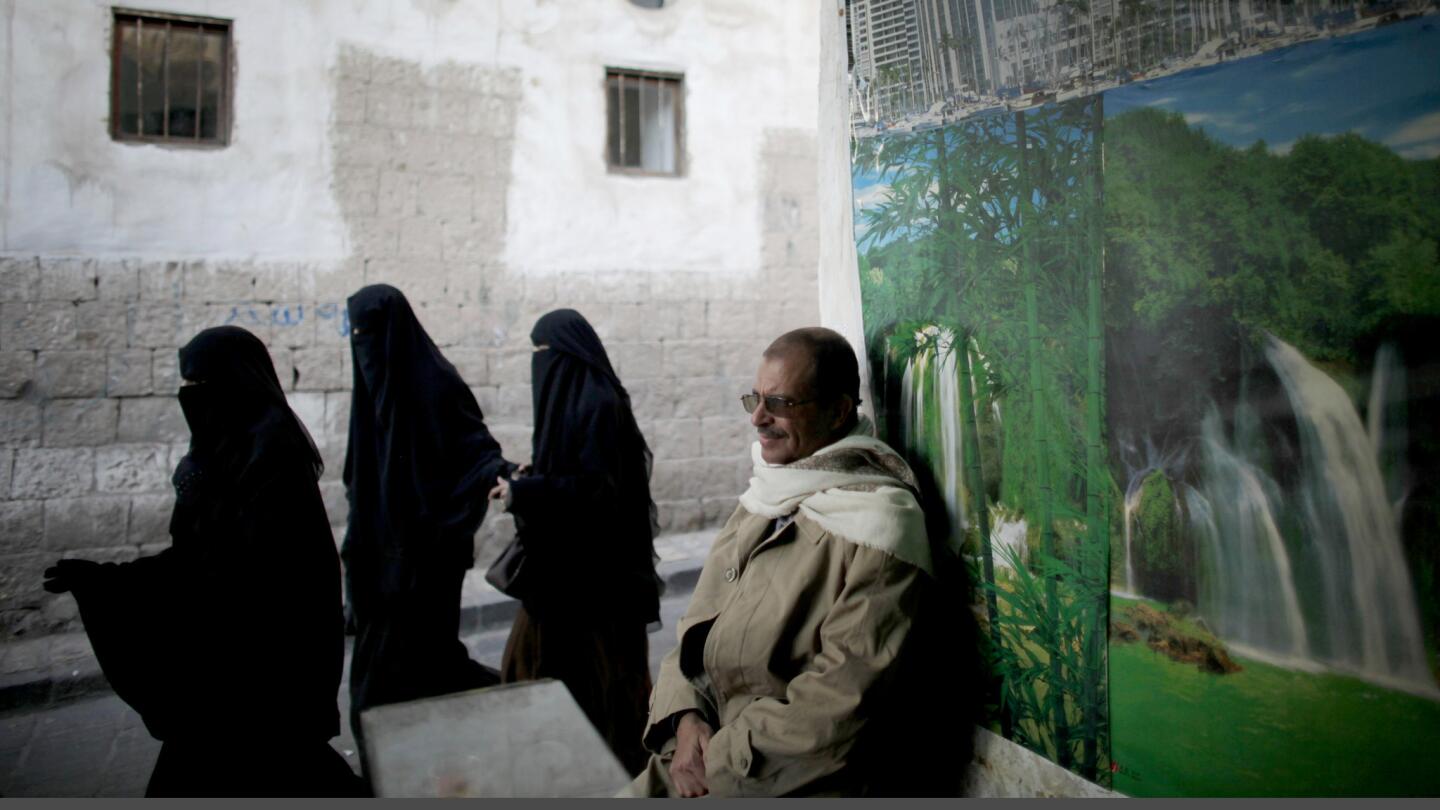
Veiled Yemeni women walk past a man in a cafe in Sana, Yemen, on Jan. 10, 2010. Women here are considered only half a witness in court cases and are forbidden to leave the house without permission from their husbands.
(Ed Ou / Getty Images)Advertisement
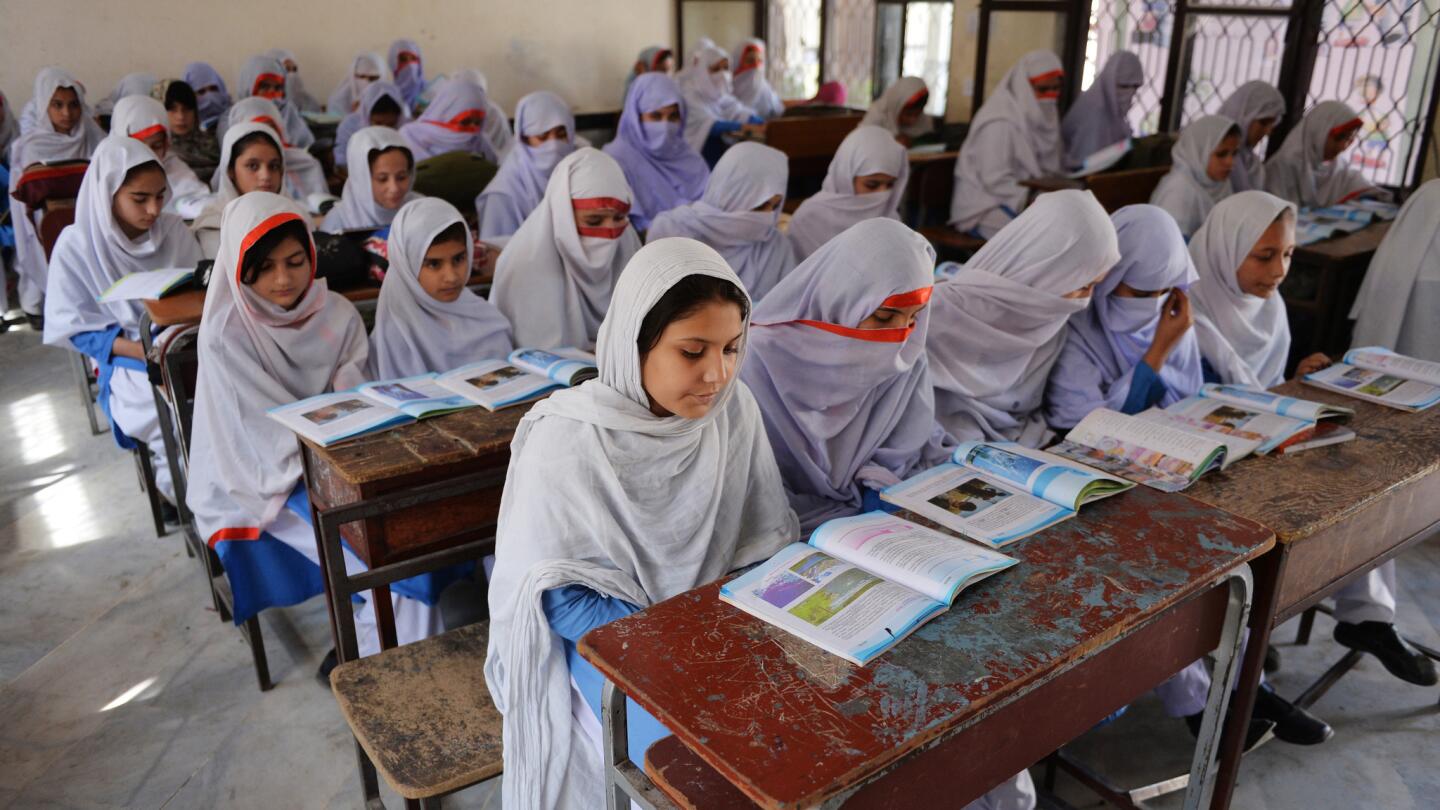
In Pakistan, the Taliban has declared war on girls education and frequently attacks educational institutions. In 2012, Taliban gunmen shot education activist Malala Yousafzai, who later won the Nobel Peace Prize. Above, girls attend school in Mingora, Yousafzai’s hometown, on Sept. 24, 2013.
(Aamit Qurehsi / AFP/Getty Images)
Malala Yousafzai, the 16-year-old Pakistani advocate for girls education who was shot in the head by the Taliban, attends the United Nations Youth Assembly in New York on July 12, 2013.
(Andrew Burton / Getty Images)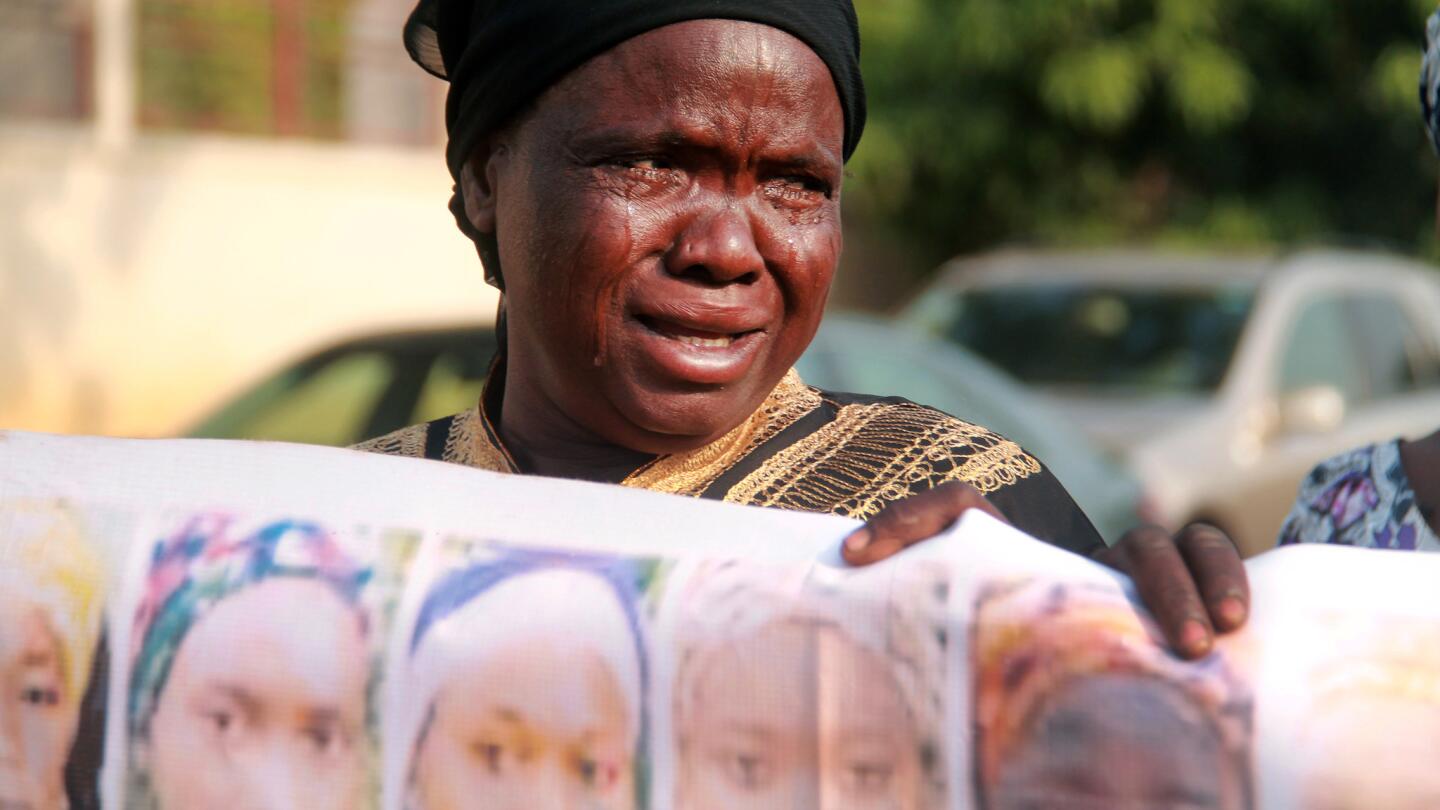
During a Jan. 14, 2016, rally in Abuja, Nigeria, the mother of a girl abducted by Boko Haram militants cries as she displays a banner showing images of girls abducted by the group.
(AFP/Getty Images)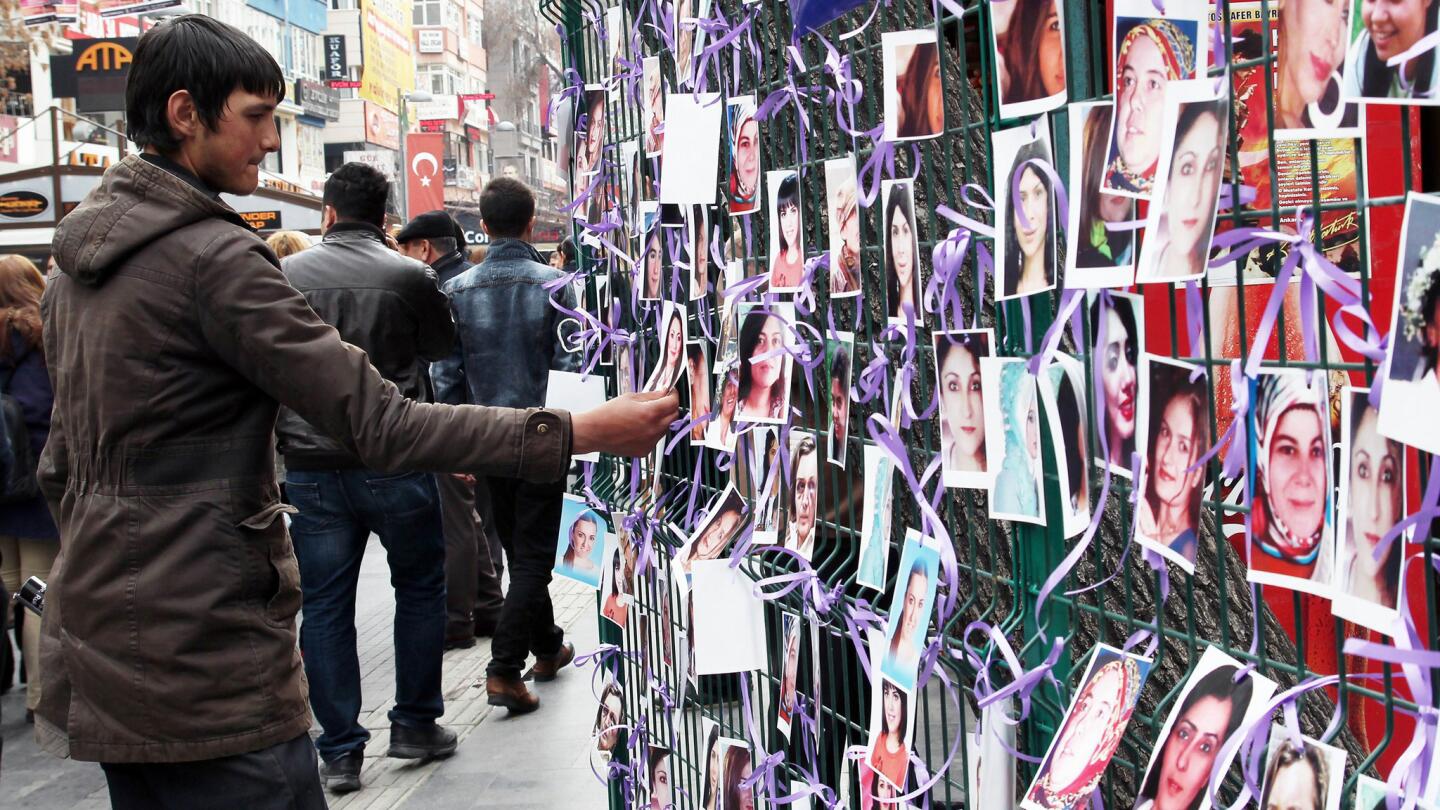
A man looks at a photo exhibition featuring murdered women, staged as a protest against violence toward women in Ankara, Turkey, on March 6, 2015.
(Adem Altan / AFP/Getty Images)Advertisement
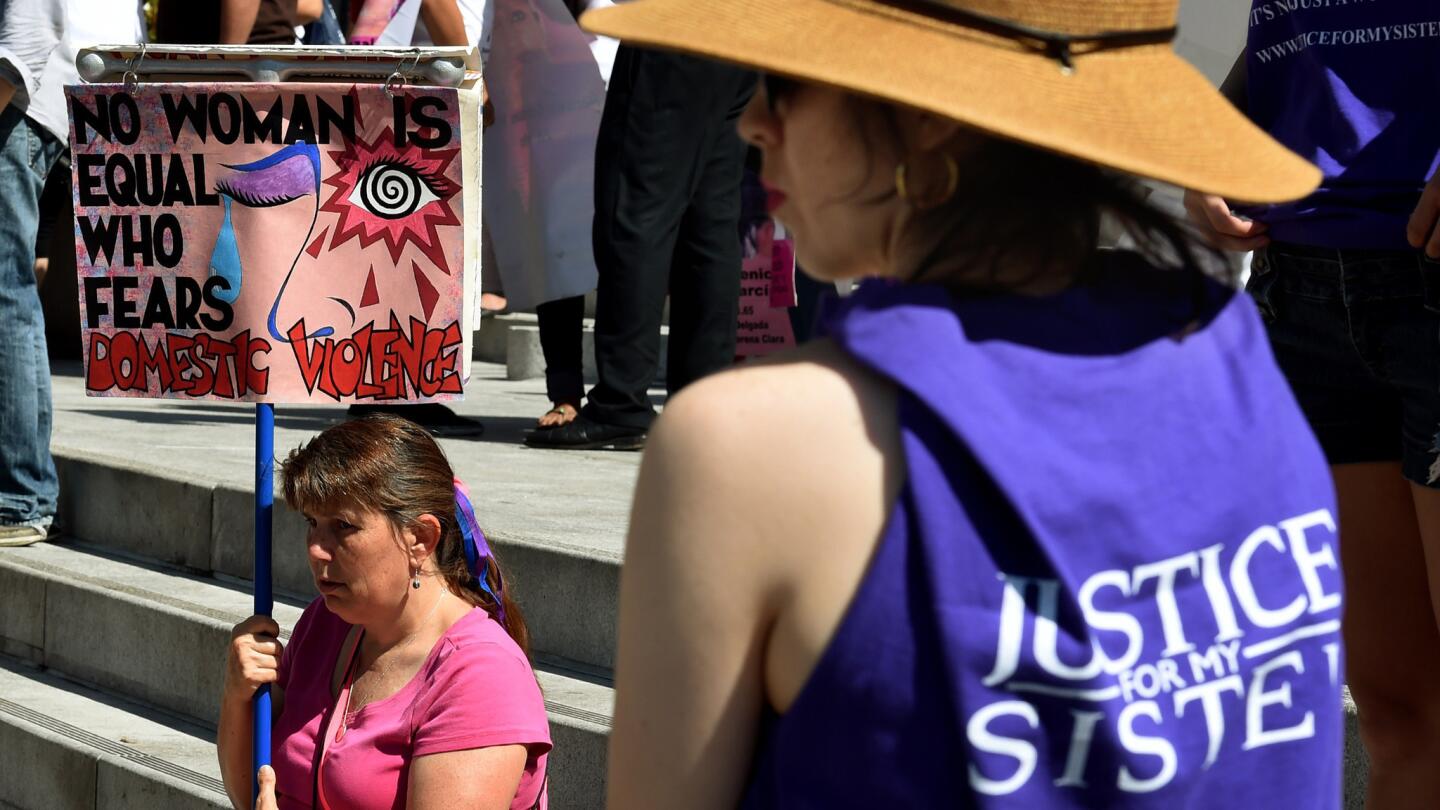
Women protest against domestic violence during an International Women’s Day march in downtown Los Angeles on March 8, 2015.
(Marrk Ralston / AFP/Getty Images)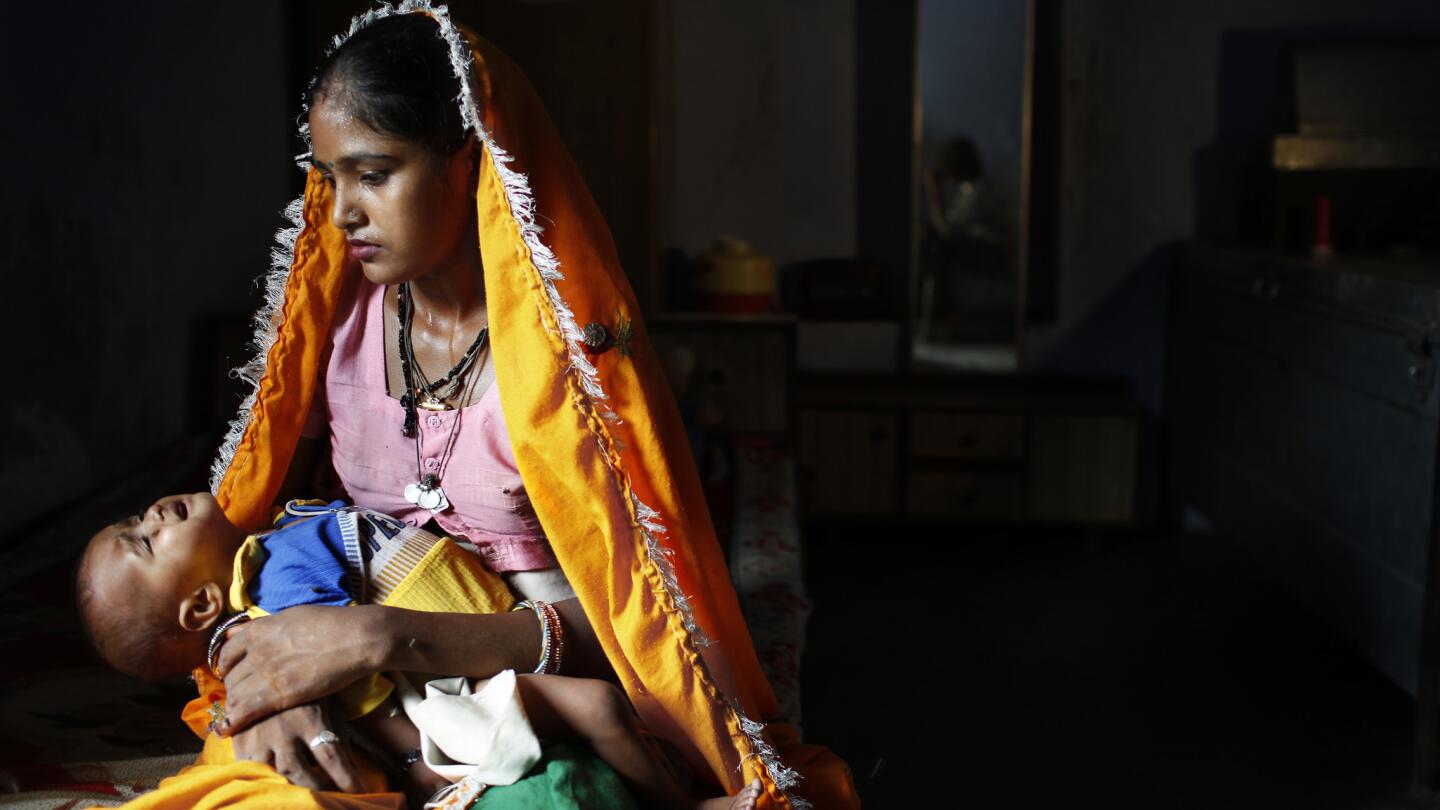
Mamta Kuhman holds her daughter on Aug. 29, 2010. Though Indian law restricts women under 18 from marrying, enforcement is so lax that nearly half do so anyway.
(Rick Loomis / Los Angeles Times)